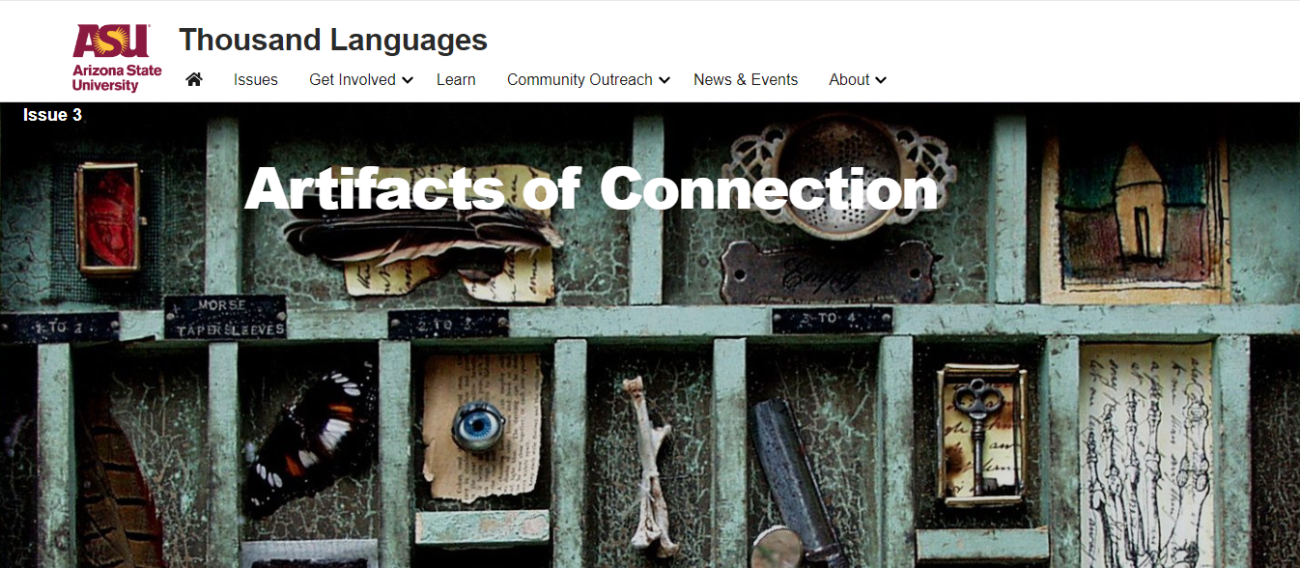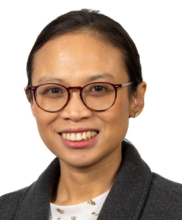By LaMonte Key — October 4, 2023
The Thousand Languages Project is an exciting collaborative translation database launched by Hayden’s Ferry Review (HFR), an award-winning international literary journal run by creative writing students in the Department of English at ASU. To bring over thirty years of the journal’s original literary art to new audiences, students and others from around the globe are translating that work into additional languages, with the lofty, poetic goal of someday reaching a "thousand languages." The project announced the release of Issue 3 on October 3.
Asri (Achie) Nurul Qodri, a 2023 graduate of ASU’s PhD in Linguistics and Applied Linguistics Program, contributed Indonesian translations to the Thousand Languages Project during her time at ASU. Qodri is from Indonesia and has been teaching English since 2004. She worked in Kyiv, Ukraine until 2015 and went to Ohio University to attain a master's degree in applied linguistics, where she taught at the Ohio Program of Intensive English (OPIE).
Qodri is an experienced English-Indonesian translator, which was a perfect fit for her participation in the Thousand Languages Project. Her translation of “When You Are Old and I Am Gray” by Eric Schlich into Indonesian appears in Issue 3. Qodri shared her experiences from the project.
Question: What interests you about the Thousand Languages Project?
Answer: The first thing that appeals to me is the collaboration between people from various linguistic, cultural, and academic backgrounds. At the beginning of the semester, I met with people who come from different parts of the world and on campus. It was thrilling to know that a group of students are willing to spend time delving into poetry and sharing it with their community through translations.
I’ve also had a lot of experience in translating and happen to love poetry writing. I used to write poems to practice my English, and in this project, I got to apply the same love and passion to poetry translating.
Q: How would you describe your experience engaging with other languages, speakers of other languages, and linguists during this project?
A: It truly felt special to be a part of this project. We met once every week to update each other on our progress but also discuss challenges and brainstorm ideas to solve translation obstacles. Sharing different approaches in translation was also really fascinating. Everyone seems to have a unique experience and preference, but at the end of the day, we have the same appreciation for the art of poetry. I think we all learn and grow separately but together at the same time.
Q: Has the project led you to an improved analysis of language structure in your native or second language?
A: Yes, it made me realize that my native language (Indonesian) is not as simple as I thought. I always joked that Indonesian is one of the easiest languages to learn because we don’t have verb conjugation or tenses. But, it actually complicates the translation process since it’s challenging to communicate the temporal contexts of the original piece. I also realized that my English vocabulary seems to be more advanced than Indonesian. There are synonyms in English that have subtle meanings, which I can understand very well, but at times it’s difficult to find the exact meanings in Indonesian. Of course, sometimes these words don’t exist in Indonesian, but I surprised myself from time to time when I used Google Translate and found an Indonesian word that I’ve never used before!
Q: Can you describe your experience with translations through various modalities like music and art?
A: I haven’t had much experience with this, but one of the translators, Zhongxing Zeng (曾中行), did a musical translation of a piece, and it was amazing. If I have the skills, I would love to do that myself. I’m also intrigued by “translating” from a picture, photograph, or painting. For example, another graduate intern, Cecilia Savala, wrote two short poems from pieces of graphic art. I think that would be an interesting project to complete.
Q: How has your work on the Thousand Languages Project been informed by your research, coursework, or other experiences in linguistics or teaching English to speakers of other languages?
A: My background is mostly in English teaching, so I always believed that translating is a powerful and useful tool to learn or teach English. In the past, I would ask students to translate a song from their native language to English and then ask other students to guess what the song titles are from the translation. The process of translating songs required them to consider structure, vocabulary, tenses, and most importantly, the message. I think the same thing can be done with poetry translation.
Unfortunately, I realized that the Indonesian community is not heavily invested in poetry, so a lot of poets are not widely known to the public. However, a classroom project in Indonesia that requires students to find and translate Indonesian poems can probably be beneficial to promote more literature awareness. In the USA, I think this type of project can also allow students to share a little piece of their culture as well.
Q: What outcomes do you hope for the Thousand Languages Project to have?
A: I truly hope more translators are involved in this project. We have so many languages in the project now, but there is so much more space for other languages like Swahili, Thai, and perhaps Indigenous languages. ASU is one of the most diverse campuses, so I would love to see more of the representation of multilingual students through poetry!

